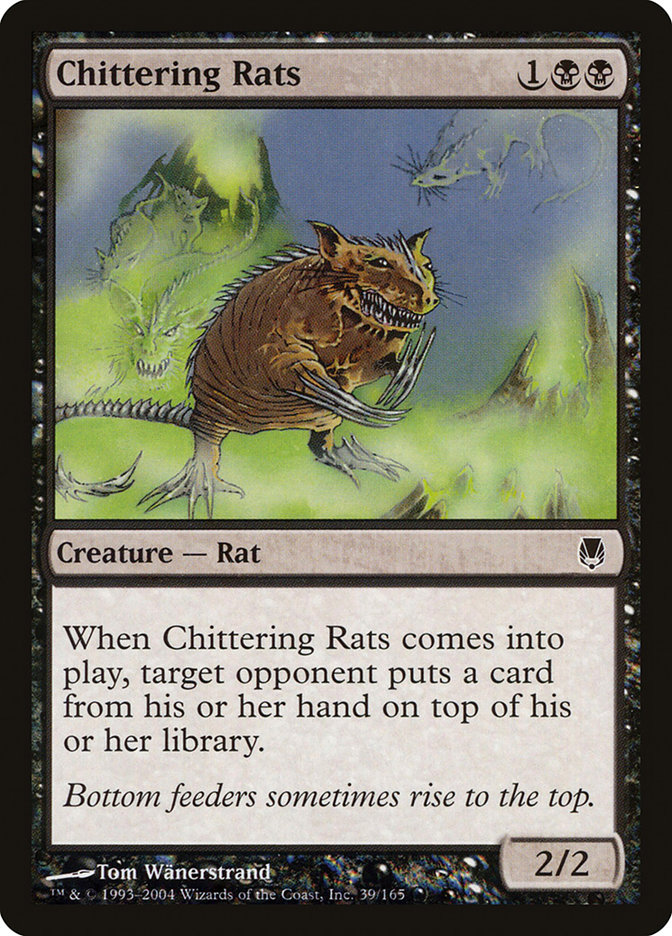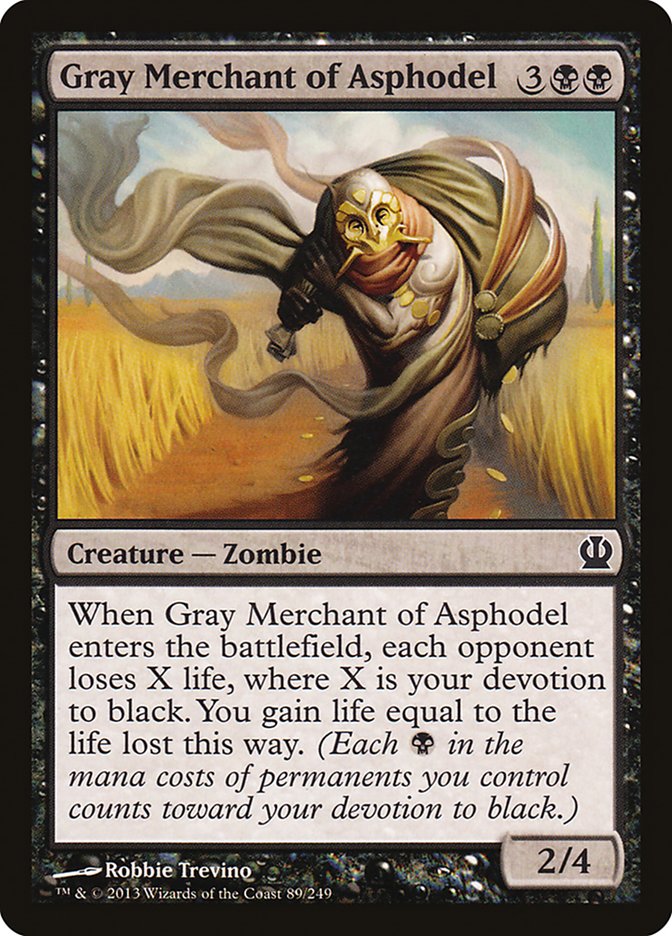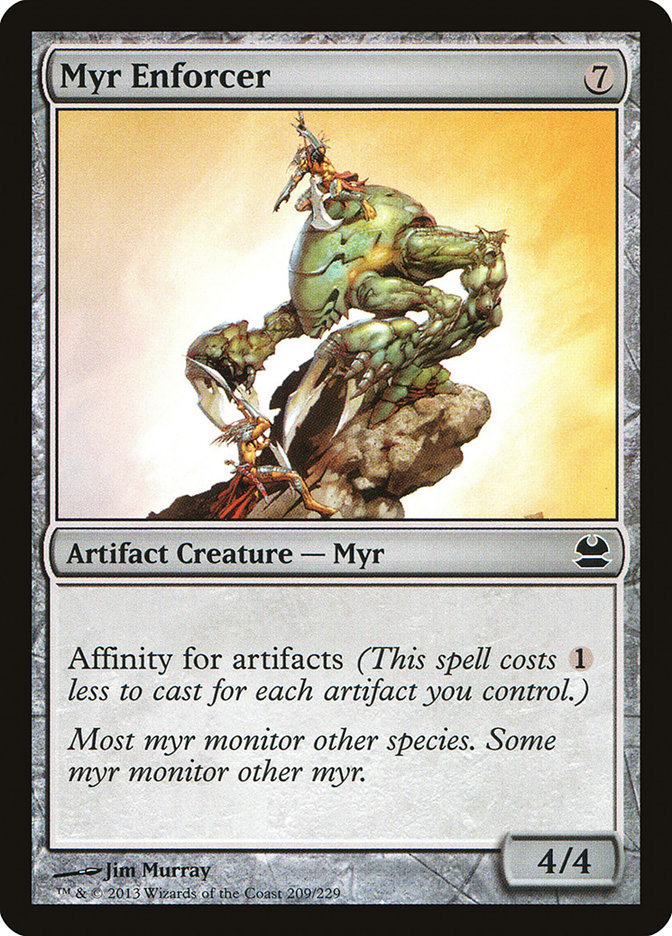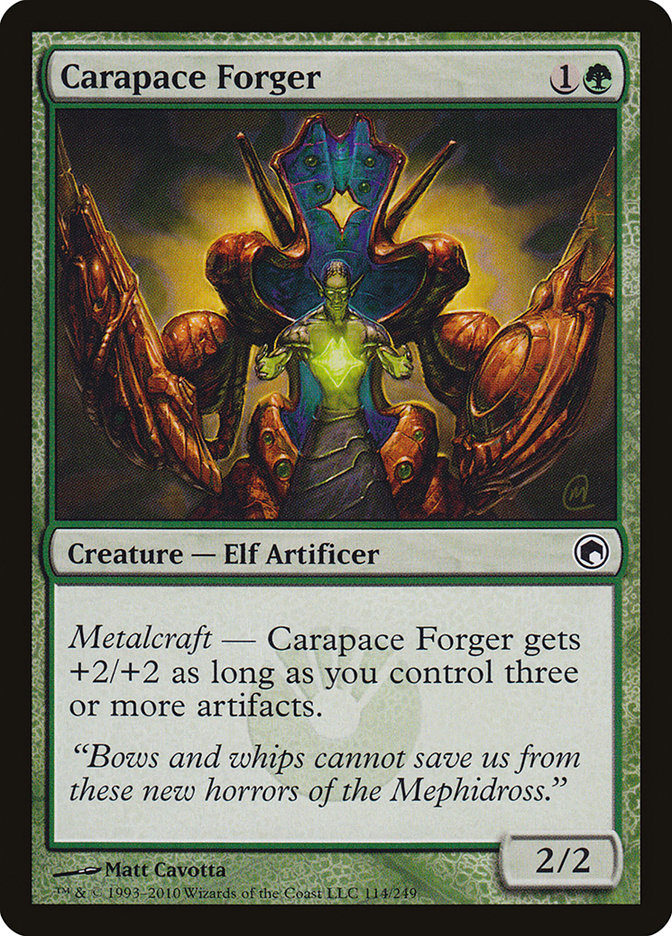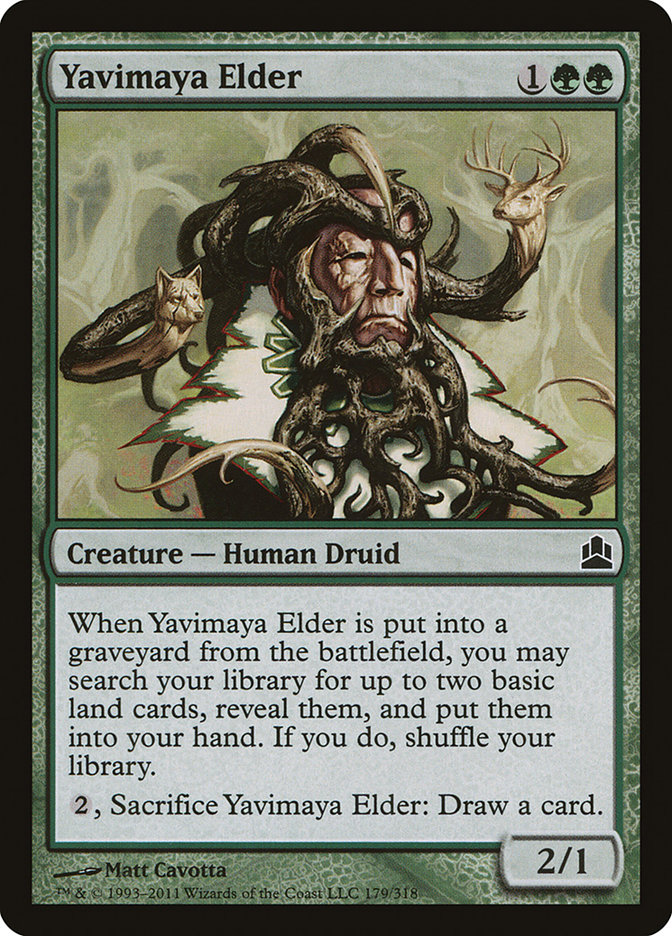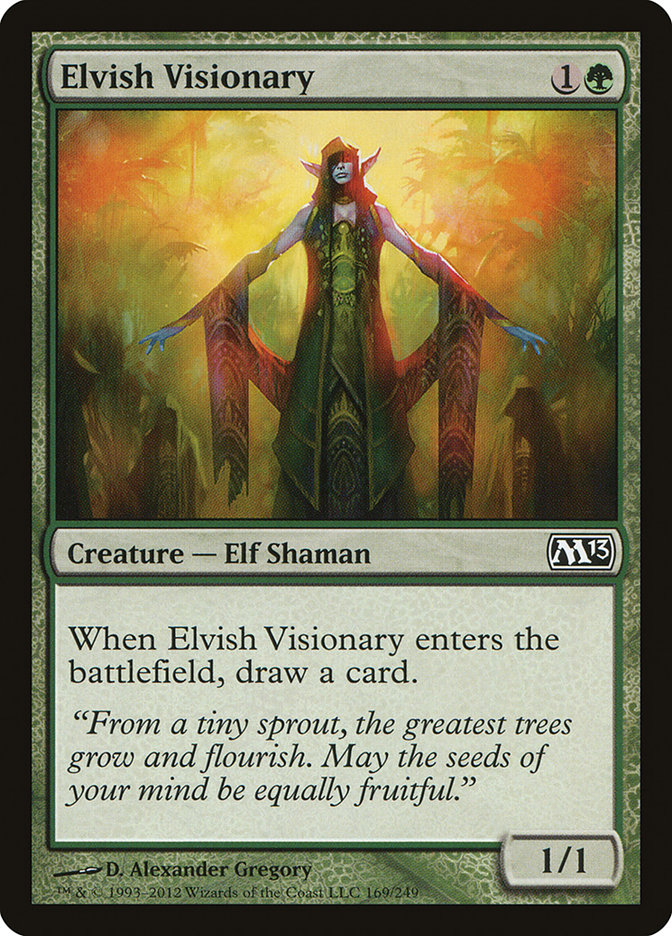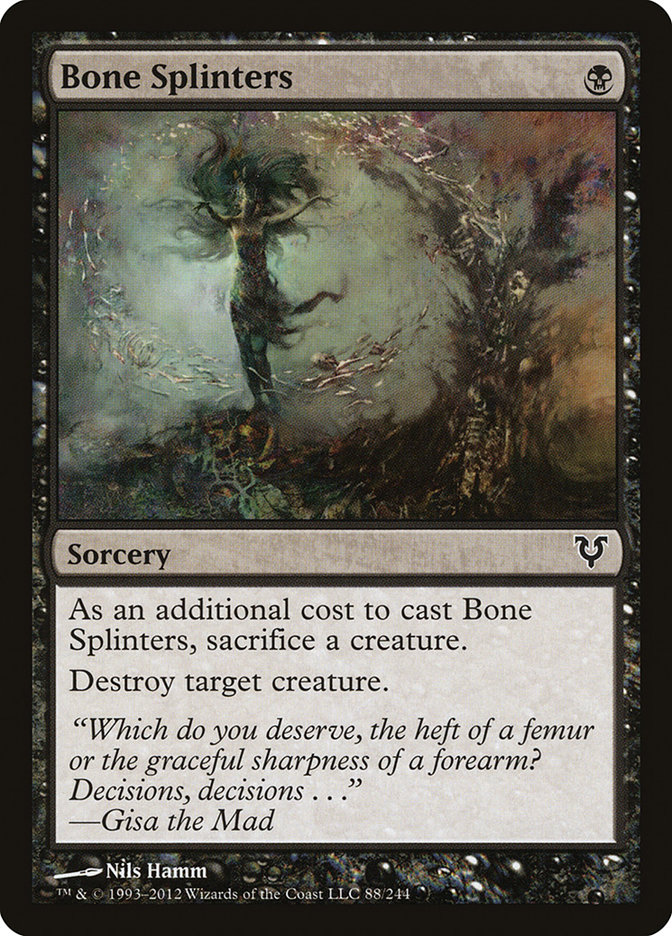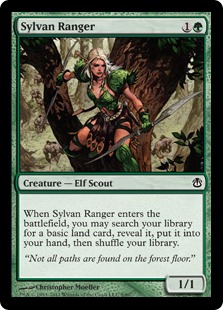We are over a month into post Cloudpost / Temporal Fissure Pauper, and I have to say that the format looks sweet. While decks like Mono-Black Control (with a heavy dose of Chittering Rats, Corrupt, and Gray Merchant of Asphodel), Affinity (complete with Atog and Fling), and Delver (same old blue spells) are at or near the top of the standings, these decks are not the dominant colossi of the recently banned offenders. Rather, Affinity and Delver have both cycled in and out of the top tier while MBC has been more constant (likely due to its "just win" ability in cards like Gray Merchant and Corrupt).
In the past four weeks Pauper has seen the rise of Burn and RUG Tron decks while also witnessing the climb and fall and then climb again of Kor Skyfisher / Reality Acid decks. White Weenie and Stompy have continued to put up results, but they are currently being outshined by Slivers. And those Nivix Cyclops / Kiln Fiend decks? Well, they’ve gone from being the best-performing deck in the format to being a minor nuisance.
The short version is that for the first time in a long time Pauper has a dynamic metagame—no more monoliths. This is good news because it means that from week to week there are enemies with clearly painted targets. My goal is to take aim.
When preparing a new deck for Pauper, I want to be sure to have game against the Mono-Black Control decks, the hyperaggressive Affinity decks, and the control elements of Delver decks. These are still the big three. It is still important to have a plan in mind for facing horde decks like Slivers and midrange attrition decks (Kor Skyfisher and Reality Acid), but being prepared to fight the top tier will usually mean a deck has tools available to combat other contenders.
How do the top-tier decks operate? MBC is based on a Swamps/devotion engine. Playing out a land every turn is ideal, and the more black mana symbols in a casting cost, the better. This means cards like Chittering Rats and Gray Merchant of Asphodel are key. These decks want to keep their creatures on the board (to enable game-ending Garys). Blocking is not ideal (since most of their early plays are fragile), so these decks also tend to be packing a ton of removal. In order to fight MBC, a deck must be resistant to removal while also being able to punch through four toughness creatures and deal with huge life swings from Gray Merchant.
Affinity plays out Myr Enforcers and Carapace Forgers and then attacks for a lot. Or it bides time and tries to eat its entire board with an Atog and then Fling it at your face. This is strung together with powerful card draw including Thoughtcast and the new addition of Perilous Research plus Ichor Wellspring (the latter plays extra nice with Atog). Fighting Affinity means being able to keep your life total high and keeping their monsters off the table. Additionally, being able to handle an Atog before it can go all Fling is key. Life gain is not the worst option here (but certainly not the best) and has additional value against the rising presence of Burn decks.
Going to war with Delver means playing around their threats. Spellstutter Sprite is not a card you can just walk into and expect to come out ahead. The best way to fight Spellstutter is to get ahead of the curve and cast threats that are too expensive to be countered. Yes, Delver has Counterspell (and occasionally Deprive), but being able to mitigate Spellstutter Sprites is crucial to victory. Another method is simply going under their counters, attempting to resolve as many threats as possible. Finally, a deck can just try to exhaust the resources of the blue mage.
With these parameters in mind, my black and green soul made the jump immediately to Putrid Leech. Whenever a format changes, I try to make B/G work because I am hopelessly devoted to Pharika. This time, however, I felt that the Leech had legs.
Putrid Leech has an incredibly relevant creature type in that it is a Zombie. One of the most popular removal spells at the moment is Victim of Night, which conveniently can’t hit the Leech. It also happens to be black and resists Doom Blade. Finally, while Leech itself does not dodge Diabolic Edict and cards of that ilk, it lends itself to other deck inclusions that can lessen the sting of targeted sacrifice effects. Being a card that costs BG, Putrid Leech encourages the use of Elves of Deep Shadow which make excellent Edict fodder. The combination of Elves of Deep Shadow and Leech also allow decks to accelerate past Spellstutter Sprite range and play multiple threats around Counterspells.
Playing Golgari also gives a potential deck access to the robust black suite of removal. The very same cards that Putrid Leech dodges are useful against nonblack creatures. While this does make any potential deck softer to Mono-Black Control, the inclusion of Putrid Leech (which as mentioned above is resilient to just such a deck) could be enough to mitigate that fact.
As I said, I am Golgari, so I fully admit that I am looking at Putrid Leech with bias. While it is important to never run a card just because you like it above others, playing with a favorite card is fine when it’s the right card to play. At the moment I believe Leech is a Card To Play. So of course I went and built The Rock.
Creatures (28)
- 4 Sakura-Tribe Elder
- 1 Krosan Tusker
- 3 Yavimaya Elder
- 3 Elves of Deep Shadow
- 4 Chittering Rats
- 1 Twisted Abomination
- 2 Rendclaw Trow
- 2 Elvish Visionary
- 4 Putrid Leech
- 1 Gray Merchant of Asphodel
- 2 Nessian Asp
- 1 Leafcrown Dryad
Lands (14)
Spells (18)

This was my first pass as a Putrid Leech deck and lived up to the key card’s name. I would win the game where I could curve Elf into Chittering Rats into Leech or Leech into Rats and then follow up with enough removal to keep the path clear. While Nessian Asp or Twisted Abomination did a lot of the actual killing, the best endgame was Gray Merchant of Asphodel.
Yavimaya Elder is a fantastic card but had some problems. The kindly grandfather was incredibly mana intensive at 1GG (then another two to get the full value). Also, it was pretty greedy to try and run a 1GG alongside 1BB. This led to the inclusion of Sakura-Tribe Elder, but this in turn resulted in multiple games where I would draw a ton of mana-producing cards and be left with nothing to do. Flooding out is not a good thing when the top decks are able to run under eighteen lands, so for each rip of a Swamp they are likely to be drawing business.
Elvish Visionary was a card I was never upset to see. It helped me to dig through the deck and provided an important chump blocker in the face of Myr Enforcers and Carapace Forgers. Leafcrown Dryad was also a key card. It provided a decent beater on turn 2 that could trade with almost every threat out of Delver while being a live drop in the late game. The Dryad also provided more insurance against removal while also making late-game creatures large enough to punch through blockers with four toughness.
I was pleased with the removal. Dead Weight is fantastic against Atog and Kiln Fiend while being completely serviceable against a large number of other creatures in the format. Victim of Night was tough on the mana but was worth it against multiple decks. Even against Mono-Black Control it has value, as I was far more concerned with hitting Cuombajj Witches and Chittering Rats to reduce the impact of Gray Merchant of Asphodel than hitting the Zombie itself.
This version of The Rock was excellent when it was able to apply early pressure, yet it fell apart in the late game. It wanted to apply pressure early and then back it up with removal. The above list was far better at removing threats then attempting to win with a large monster. Tweaking the numbers and streamlining the list was warranted.
So what worked? Putrid Leech was a key card, as it could beat the tar out of adversaries and matched up favorably with multiple creatures in the format. If I included Putrid Leech, then Elves of Deep Shadow was along for the ride. This would lead my deck to the darker side of Golgari. As such, I would be able to include Chittering Rats.
An aside: Elves of Deep Shadow into turn 2 Chittering Rats feels so dirty I need to play with hand sanitizer next to my keyboard.
Since Gray Merchant of Asphodel was so good in the first iteration, I wanted to keep it around for the more aggressive version. If a turn 5 Merchant was good, then a turn 4 Merchant portended to be fine as well. The inclusion of Gray Merchant of Asphodel as the curve topper meant I needed to find more black cards to round out the beat down.
Since Victim of Night is the black removal spell that I am concerned with blanking, it made sense to find another aggressive zombie. Enter Dead Reveler. At 3/4, its stats are above the curve for a three-mana creature in Pauper. It also provided an additional outlet for turn 1Elves of Deep Shadow since many decks I played were ill equipped to handle the Reveler on turn 2.
Leafcrown Dryad also made its way to the new list. Removal is prevalent at the moment, and the ability for the Dryad to both attack early or provide a significant bonus late made it incredibly enticing. Suiting up a Chittering Rats or a Gray Merchant of Asphodel with the Dryad also made it difficult for Delver decks and Kor Skyfishers to attack through for the win.
After battling with a rough list, I have settled on this for my current weapon:
Creatures (29)
- 4 Elves of Deep Shadow
- 4 Chittering Rats
- 1 Phyrexian Rager
- 1 Shambling Shell
- 4 Elvish Visionary
- 4 Putrid Leech
- 1 Sylvan Ranger
- 4 Dead Reveler
- 3 Gray Merchant of Asphodel
- 3 Leafcrown Dryad
Lands (12)
Spells (19)

A few notes on the final cards:
Bone Splinters: I was looking for another "kill almost anything" spell. Jason Sirichoke recommended this card as a way to make use out of late-game Elves of Deep Shadows that managed to stick around. So far this card has performed admirably, but as the entire removal suite is dependent on the metagame, it is not promised a slot in the future.
Shambling Shell: Sometimes this deck would get to a point where it just needed to topdeck any threat to win. Shambling Shell provided a card that could come back from the dead thanks to dredge to attack or just grow a more relevant threat. It also happens to be a Zombie and helps make 2/2s resist opposing Dead Weights.
Sylvan Ranger: I wanted an additional creature that drew a card. While Phyrexian Rager actually draws a card, I am already dealing myself enough damage. Sylvan Ranger acts as a fifth Elvish Visionary except that is always draws a land. In a deck that wants access to BG on turn 2 and BB on turn 3, this is far from a bad thing.
The best way to describe this deck is that it is the beatdown until it isn’t. Similar to a midrange aggressive list, GolGary wants to apply the pressure early and follow it up with disruption and removal. Most of the time this disruption is simply having a larger creature. A Putrid Leech or Dead Reveler is enough to handle most of the commonly played threats in Pauper, and when they team up with a Leafcrown Dryad, they just go BIG. At some point the board stabilizes, and you are ahead on life. At that point you can change game plans to draw into a Gray Merchant of Asphodel, attacking to gain small advantages and keeping Chittering Rats back to enable a game ending drain.
When things do not go according to the beatdown plan, the goal is to block and bide your time. Play out Putrid Leech as a member of the all-defensive team until your army is larger. Leafcrown Dryad is key here because it can swing battles in your favor.
The sideboard is for the now. Unlike in months past, Pauper has a dynamic metagame, so the slots in the extra fifteen are far more fluid than they might have been in September. As for the expected metagame . . .
Delver: After a few weeks as only one of the best decks, it appears that Delver is rising to the top again. While your creatures are just better once they hit the board, the problem resides in getting them past Counterspell and Spellstutter Sprite. Some lists also run two copies of Daze, making it even tougher to know when to go for a threat. Elves of Deep Shadow is a huge help in getting you ahead on tempo, and Leafcrown Dryad does good work stalling most of their threats.
Putrid Leech is key but is not the end all and be all. Sticking one goes a long way, but they can bounce or give it Narcolepsy. Putrid Leech also sadly can get snagged in the Coral Net. Out of all the top decks, this one is the toughest pairing pre-board.
Sideboard: +2 Okiba-Gang Shinobi, +1 Grim Harvest, +1 Leafcrown Dryad, -1 Bone Splinters, -3 Dead Weight
In games 2 and 3 you want to hit as many consecutive drops as possible. Sorcery-speed removal is not as important here (and it might be correct to side out two Merchants for two copies of Diabolic Edict). Your ideal opening has Elves of Deep Shadow and multiple threats. Attack when the coast is clear and then ninja out the Shinobi for pseudo Blightning beats. If the game goes long, you can bury them under Grim Harvest—just make sure not to get caught without mana to pay the recover cost.
Mono-Black Control: While you are both Gray Merchant of Asphodel decks, you have some significant advantages. Your best creatures dodge their removal, and you can access Gray Merchant a turn faster. This is one of the better matches for the deck. Use 1/1 dorks to feed their Geth’s Verdicts and be careful about running a Putrid Leech into Dead Weight.
Sideboard: +1 Grim Harvest, +4 Diabolic Edict, -3 Victim of Night, -1 Doom Blade, -1 Dead Weight
Sideboarded games you still want to be resilient to their removal but also want to have the options to win the long game. Again, Grim Harvest shines.
Affinity: Another fair to good matchup. Once more your creatures square off very well against theirs. The biggest threat here is getting burned out by Galvanic Blasts or Fling. The goal here is to keep your life total high enough until a Leafcrown Dryad enhanced creature can start attacking with impunity.
Sideboard: +3 Wickerbough Elder, +1 Dead Weight, -1 Gray Merchant of Asphodel, -1 Leafcrown Dryad, -1 Phyrexian Rager, -1 Read the Bones
While the cards you are taking out are not bad for fighting the machine, the cards you bring in are far more important. If your Affinity adversary has an especially aggressive build, remove the Bone Splinters and Sylvan Ranger for the Brindle Boars and take out both copies of Read the Bones in favor of leaving in the Gray Merchant.
Burn: A recent addition to the top tables of Pauper. This is a flat-out race, and you want to do everything in your power to keep your life total high. Sometimes they just have it, and there is nothing you can really do.
Sideboard: (No Kiln Fiend) -3 Dead Weight, -1 Bone Splinters, -1 Read the Bones, +2 Okiba-Gang Shinobi, +2 Brindle Boar, +1 Leafcrown Dryad,
(With Kiln Fiend) -2 Read the Bones, -1 Phyrexian Rager, -1 Bone Splinters, -2 Victim of Night, +1 Dead Weight, +2 Okiba-Gang Shinobi, +2 Brindle Boar, +1 Leafcrown Dryad
In versions with Kiln Fiend the card must be stopped. Against both versions there is one imperative: survive. Shinobi helps prevent them from hoarding burn. In this pairing you want to avoid dealing yourself too much pain, and Elves of Deep Shadow becomes largely a 1/1. The only time you want to use the Elves is to enable a turn 2 Chittering Rats, which can buy you far more time than the half a Shock will cost.
CetaTron: Something had to fill the void of the big-mana decks once Cloudpost left, and the RUG Tron list seeks to do that. Thankfully they have fewer than ten spells that actually matter and take three or four turns to set up. They have Expedition Maps, and we have mana dorks—we’re faster.
Sideboard: -3 Dead Weight, -1 Sylvan Ranger, -1 Bone Splinters, +2 Okiba-Gang Shinobi, +1 Grim Harvest, +2 Wickerbough Elder
Save your removal spells for Fangren Marauder and Ulamog’s Crusher—they’re the only cards that can really ruin the day. Many of these decks run two copies of Rolling Thunder, so be wary of overcommitting to the board. The Wickerboughs come in to help combat the Circle of Protection: Green that may make an appearance. If CetaTron is packing extra copies of Flame Slash, then it might be worth bringing in another Leafcrown Dryad to protect the Leeches.
Slivers: One of the better aggressive decks at the moment and can actually muster a more robust army. But we are a black deck and can destroy their monsters. Block wisely and play around Prismatic Strands.
Sideboard: -1 Phyrexian Rager, -2 Read the Bones, -1 Sylvan Ranger, -1 Leafcrown Dryad, +1 Dead Weight, +4 Diabolic Edict
Post-board the goal is to destroy all monsters and prevent them from sticking Slivers that could make combat go poorly for the good guys. Drawing cards at the cost of life is less impressive when facing down 5/5 vigilant Worm predators.
White Weenie: I do not have a ton of experience playing this pairing. Even though I believe White Weenie is incredibly well positioned at the moment (and the deck continues to do well), it is not as popular as other decks. Thankfully, Putrid Leech deals with their best threat in Guardian of the Guildpact, and Leafcrown Dryad provides insurance against Kor Skyfisher and Squadron Hawk.
Sideboard: -3 Dead Weight, -1 Bone Splinters, +3 Wickerbough Elder, +1 Grim Harvest
Here you want to make sure you have the last Putrid Leech standing, and Wickerbough Elder helps to blow up Journey to Nowhere. It also takes out Bonesplitter, which can allow Guardian of the Guildpact to trade with Putrid Leech. If White Weenie brings in Obsidian Acolytes, you want switch up your removal to gain access to Diabolic Edict. You might have to convert to a destroy all monsters strategy. In this case, remove two copies Gray Merchant of Asphodel, the lone Phyrexian Rager, and a Victim of Night for Diabolic Edicts.
So there you have it—a new brew for a new metagame. The lack of obviously powerful best decks means that as the metagame evolves there will be opportunities to exploit holes. Is GolGary going to establish itself as a top deck? Maybe, but I can tell you this much—if my opponent goes turn 1 Swamp, I know I want to be playing with Putrid Leech.
Keep slingin’ commons-
-Alex
SpikeBoyM on Magic Online
https://www.facebook.com/nerdtothecore
The Colors of Pauper: W U B R G
Discuss Pauper on Twitter using #MTGPauper

